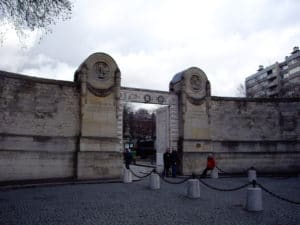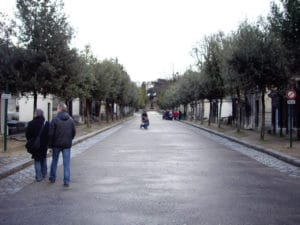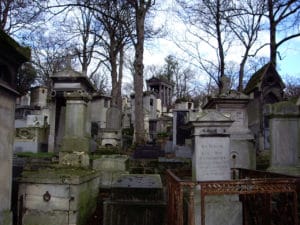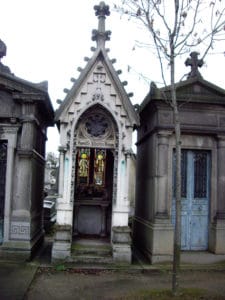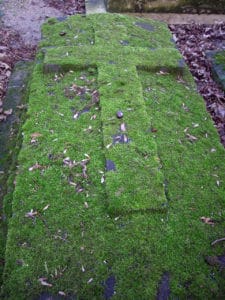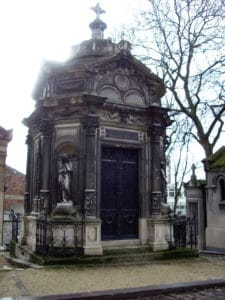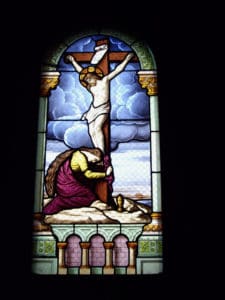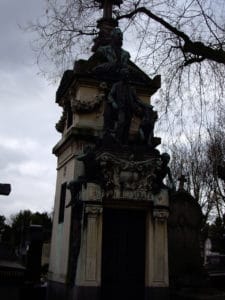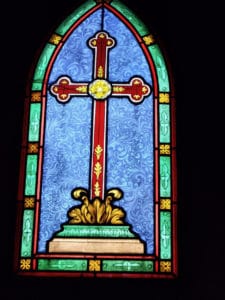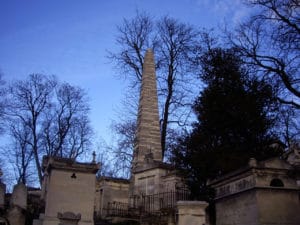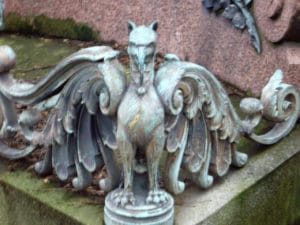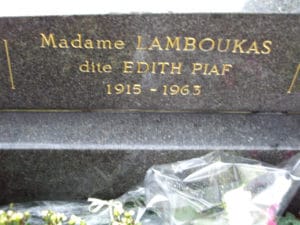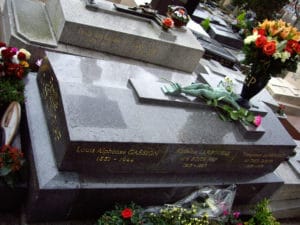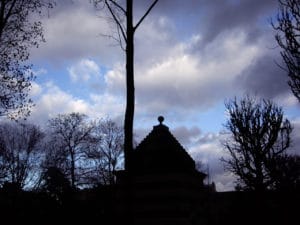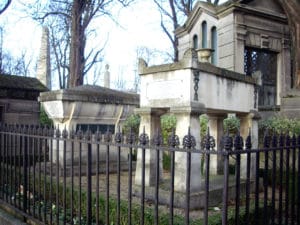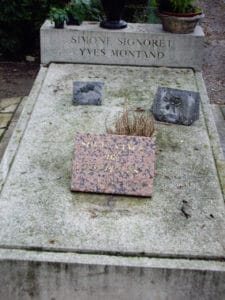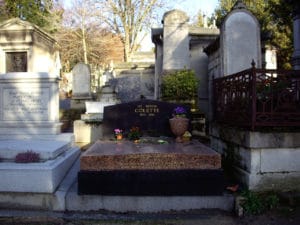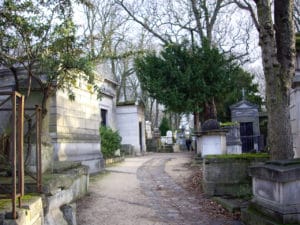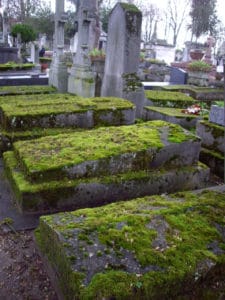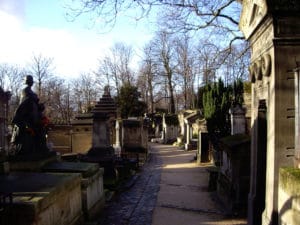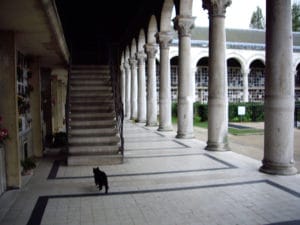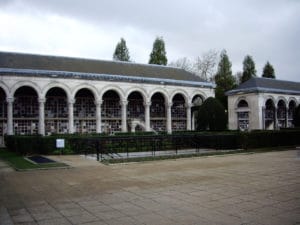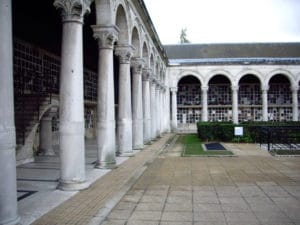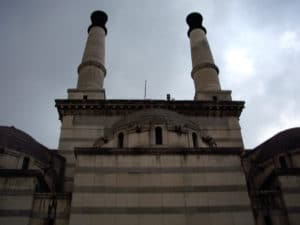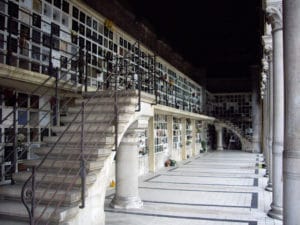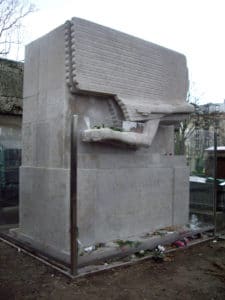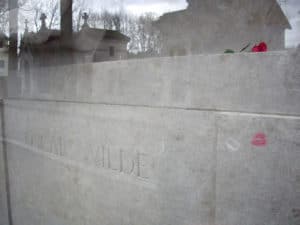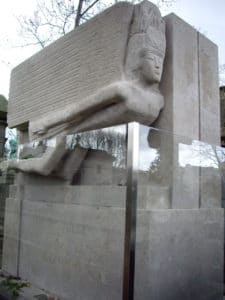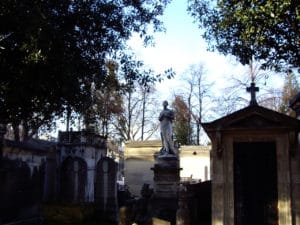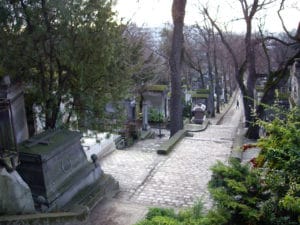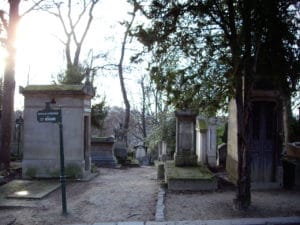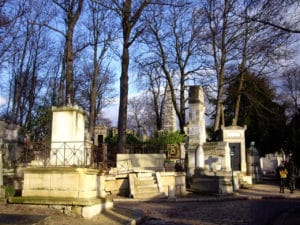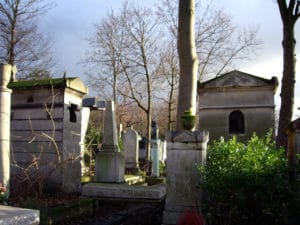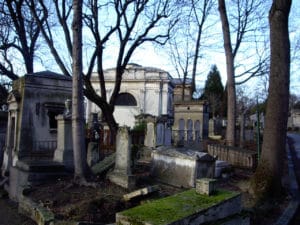Cimetière du Père Lachaise, The Final Resting Place to Millions
The Cimetière du Père Lachaise (Father Lachaise cemetery) is definitely a must do when visiting Paris and I firmly believe its residents would have wanted that. For many generations it has remained one of the top ten things to do. It resembles a hilly English garden complete with moss-covered trees, flowers and cobblestone streets. Under the jurisdiction of the Mairie de Paris (the mayor’s office), it is the most prestigious and most visited park. According to the official website of the city of Paris, it has been home to over 1 million deceased people along with the stored remains in the Aux Morts ossuary (a final resting place of human skeletal remains), the number of human remains exceeds 3 million.
Originally named in honour of Father François d’Aix de La Chaise, noted for being King Louis XIV’s confessor (the Catholic priest who takes your confession of sins). The story goes that the Jesuits had built a house on the hill that was called Champ-l’Éveque. When the King visited the area, the Jesuits, didn’t have an appropriate gift, so they renamed the hill Mont-Louis in his honor. The Residence at Mont-Louis was later the home to Father Lachaise, and the entire hill eventually was renamed by the locals and took on the priest’s name.
Located in the 20th arrondissement of northeastern Paris, it offers a unique place to walk, rest, meditate and even daydream. You can stroll past huge trees, flowering bushes on the maze of stones between the graves. It boasts an impressive number of Gothic and Baroque graves, Haussmann burial chambers, ancient mausoleums, and is filled with art, culture and of course lots and lots of history. The gravesites at Père Lachaise also range from a simple marker and tombstone, to towering monuments and even elaborate mini chapels dedicated to the memory of a well-known person or family. Many of the tombs are about the size and shape of a telephone booth, with just enough space for a mourner to step inside, kneel to say a prayer and leave some flowers.
In 1804, Emperor Napoleon I (Bonaparte) inaugurated the cemetery and decreed that it was the place of prestige. He then had the remains of French playwright Molière (the French equivalent of Shakespeare) and famous lovers Abelard and Heloise transferred to Pere Lachaise in the early 19th century. His wife Josephine was so moved by the story of the romance of Abelard and Heloise that she became concerned with the state of their bodies and had him moved as well. The story of their love goes that 12th-century Abelard, a theologian was employed to instruct the intellectually gifted Heloise, the niece of the Canon of Paris named Filbert. Despite their 20-year age difference and the strict laws of the time, both fell in love and Heloise became pregnant with Abelard’s child. They fled to Brittany and married but were soon discovered by Heloise’s uncle. Heloise was forced to become a nun and poor Abelard was forcibly castrated by a gang of Filbert’s men and took the Holy Orders. The two never saw each other again, but wrote letters to each other for the remainder of their lives. To this day lovers or lovelorn singles leave letters at the crypt in tribute to the couple or in hope of finding true love.
Also called cimetière de l’Est (the cemetery of the East) it is the largest cemetery in France, covering 44 hectares. It has rolling gentle hills with carefully plotted paths and elaborately named avenues and of course tombs. It is easy to see why Père-Lachaise is considered Paris’ most hauntingly yet beautiful place of rest. More than 3 million visitors from around the world visit it every year gazing at the final resting places of such famous musicians and singers as Frédéric Chopin, Edith Piaf, Maria Callas, Jim Morrison and the English-playwright Oscar Wilde. There are of course big names in French literature and cinema buried here too. Marcel Proust, Jean de la Fontaine, Molière, Balzac, Colette, Yves Montand and Simone Signoret just to name a few. American literary elites as well. Famed authors like Gertrude Stein, Alice B. Toklas and Richard Wright are buried here. Truly it is probably the greatest collections of deceased human talent in the world, most certainly in France.
Behind the Aux Morts (the dead) monument lays an ossuary of the bones of Parisians from cemeteries all over the city. It’s a smaller modern-day catacomb not to be confused with the real catacombs located in the 14th arrondissement near Denfert Rochereau, where skeletal remains decorate the narrow underground walkway. Upon recently reaching their limit for the ossuary, the bones were removed for cremation and returned to the ossuary after being incinerated. In the ossuary, efforts are made to store bones and ashes in separate boxes to ensure that everyone has a final place here. No small feat considering the millions of people whose remains are there.
There are five entrances to the cemetery. The easiest route is to enter via the Gambetta gates and walk downhill through the cemetery. This will take you right past the resting place of one of my heroes, Oscar Wilde. Friends put up the money to buy a plot at Père Lachaise and had him buried there with a monument by the young Epstein, which survived intact until the 1960s when its outsize genitals were smashed off in an act of vandalism and homophobia. It is sadly rumored that the Cemetery Director used them as a paperweight. It was not without a public outcry though, and this act began lengthy negotiations with the French authorities and the Irish government which led to the tomb’s restoration, which was finally completed in 2011. The cost of the work was perhaps 40,000 to 50,000 euros, the greater part of it put up by the Irish government, and a lesser amount by the Ireland Fund of France. His tomb is kept behind a glass wall now for protection. But still to this day, passersby leave lipstick kisses and messages on the glass wall, which every week are dutifully cleaned away by his admirers.
Another one of Pere-Lachaise’s touching features is its memorial to World War II Deportees and Resistance Fighters. The five monuments are located in the cemetery’s southeast corner, near the “Porte de la Reunion” entrance.
Although the tombs of Père-Lachaise date back as far as 200 years, they are not all equally well maintained. Each family or estate is responsible for the upkeep of its own monuments, and while some are in excellent condition even after centuries, many have not been touched in decades. So it is very common to see tombs that have collapsed or otherwise fallen into disrepair. Often the engravings are completely worn away, making it impossible to tell who was buried there or when; maps of the cemetery show only the most famous occupants.
For the modern day Parisian, Père Lachaise is still an operating cemetery and accepts new burials. Unfortunately, it is not easy to make this your final resting place. There are many rules and they are strict. If you lived or died in the capital city you are eligible to be buried here, that’s it. The hard part is the waiting list and there are rarely new plots. Père Lachaise has a standard custom of issuing 30-year leases on gravesites, so that if a family does not renew a lease, the remains can be removed, a new grave created, and the deterioration of the cemetery minimized. Abandoned remains are boxed, tagged and moved to Aux Morts ossuary, in Père Lachaise cemetery. There are options to buy in perpetuity or for 50, 30 or 10 years as well, the last being the least expensive option.
The cemetery manages to squeeze an increasing number of bodies into a finite and already crowded space. One way it does this is by combining the remains of multiple family members in the same grave. At Père Lachaise, it is not uncommon to reopen a grave after a body has decomposed and intern another coffin. Some family mausoleums or multi-family tombs contain dozens of bodies, often in several separate but contiguous graves. Shelves are usually installed to accommodate them.
I have always found graveyards remarkably calming and gradually a source of inspiration for me. I enjoyed my day at Pere LaChaise. It reminded me of when I lived in Montreal and that I would routinely bike through another massive cemetery – Mount Royal Cemetery, which houses over a million people in the middle of the city of Montreal.
One must remember that while all things must come to an end, we thus need to make the most of life, enjoy each day, not waste time or opportunities. Carpe diem.
For more information on Pere LaChaise:
Vivre mon Paris

Receive the news in your emailbox
If you like this articles , you can subscribe to our weekly newsletter.

